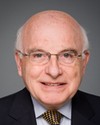Good afternoon.
Good afternoon.
Mr. Chairman, my thanks to you and your fellow committee members for this opportunity to appear before you today.
We're here to discuss Ericsson's acquisition of the assets from Nortel and how we believe it will benefit Canada. I and my colleagues have already been introduced, so we can go on from here. I'd like to take the first few minutes to talk about Ericsson's presence in Canada.
Ericsson in Canada began operations in 1953 and has gone on to become one of the top innovation companies in this country. In fact, over the past decade we have invested more than $2 billion towards R and D in this country.
We currently employ 1,900 people across the country, including 1,500 at our Montreal facility, which is one of Ericsson's largest R and D centres outside of Sweden. The remainder of our employees are based in Mississauga, Ontario, and in Vancouver, British Columbia. Once the acquisition is complete, we will employ approximately 800 more people in Canada, and our investment in R and D in this country will grow accordingly.
Our Canadian employees have contributed over 330 patents to Ericsson over the past quarter century, and we are confident that with the addition of Nortel's competence in Ottawa as a result of this acquisition, this level of innovation will continue.
Throughout its history in Canada, Ericsson has built much of the vital telecommunications infrastructure in this country. We have been the exclusive supplier of wireless technology to Rogers for the past 25 years. We also supply telecommunications solutions to Bell, Telus, and other Canadian operators, and to utilities in Quebec and New Brunswick, and have been the trusted supplier to the Government of Canada and the Department of National Defence.
As well, we are currently working with a number of Canada's new entrants into the wireless market. In fact, just this week we announced a major contract with DAVE Wireless, in which Ericsson will be supplying a wireless network in key markets across Canada.
Ericsson's history in Canada has shown that we have worked hard over decades to build a significant customer base, with a focus on growing innovation, job creation, and telecom leadership. We are committed to continuing this dedicated effort towards innovation and in providing leading-edge solutions to our customer base, both existing and new. In short, our commitment to Canada is strong and long-lasting.
As you know, Ericsson has entered into a purchase agreement to acquire substantially all of Nortel's North American CDMA business and certain LTE assets for $1.3 billion U.S. on a cash and debt-free basis. The deal is a result of an auction initiated by Nortel, which was closely supervised by the bankruptcy courts in both Canada and the U.S. The auction was open to all qualified investors, including Canadian investors, and was designed to maximize value for Nortel and its stakeholders. The auction was for a specific group of assets and number of employees predetermined by the court process. The auction process was determined by the presiding judges to be fair to all.
The Nortel CDMA business covered by the agreement is successful from both technological and profit perspectives, and it is our intention that this will continue. It will operate largely as a separate unit within Ericsson, led by its current management, headed by Nortel's president of Carrier Networks, Canadian Richard Lowe, who I believe appeared here earlier today.
While the CDMA business unit is a leading provider of network equipment to wireless carriers in this market, CDMA technology is experiencing a gradual decline as it's replaced by the next generation of wireless technologies, including LTE, or long-term evolution. These next-generation technologies provide faster data speeds, enable new broadband services, and enhance the consumer experience overall on mobile devices.
As it's these LTE assets that seem to have generated the greatest interest in the acquisition, I would like to clarify the nature of the agreement with respect to LTE technology.
There are two components. First, we will employ approximately 800 Canadian Nortel employees, of which approximately 400 are directly involved with LTE development. Second, we are licensing certain LTE patents on a non-exclusive basis. To be clear on the latter point, we are not purchasing any LTE patents from Nortel; we are simply licensing them on a non-exclusive basis. Nortel will remain the owner of its LTE patents and will be free to license or sell them to other companies, should they choose to do so. Therefore, these patents remain in the ownership of Nortel. These assets and rights being acquired are extremely complementary to Ericsson and upon completion of the acquisition they will make Ericsson one of the leading wireless technology and service providers in North America.
In response to comments in the press about national security, I note that CDMA networks, as we heard earlier today, are based upon common international standards, which means that the technology is widely shared in the industry. Consequently, we don't see national security concerns applying to this acquisition.
The approximately 800 Canadian Nortel employees who work in these areas, both CDMA and LTE, will be employed with substantively the same pay and benefits and based in the same locations. We do not anticipate any layoffs or major changes in the day-to-day work of these employees.
We see this acquisition as an opportunity to continue the tradition of excellence in innovation, with Canadian technology jobs being preserved and ultimately more being created, to continue Ericsson's significant investment in Canadian R and D, and to sell made-in-Canada technology solutions to our customer base around the world.
While the book value of the acquired assets is below the threshold under part IV of the Investment Canada Act, it is nevertheless the case that the proposed investment will benefit Canada. For example, the proposed investment affords an opportunity for Nortel's research to join Ericsson's global research force and to share knowledge and best practices with Ericsson Canada's researchers. It will assist Ericsson to keep Canada at the forefront of technological development with respect to next-generation wireless technologies such as LTE.
The benefit of this transaction will help fulfill the government's goal of attracting foreign direct investment in order to increase Canada's productivity. Ericsson will employ the approximately 800 Nortel employees in Canada defined by the court-approved auction. Ericsson's R and D facility in Montreal is one of its largest worldwide and is one of the top R and D firms in the country.
Ericsson has been a trusted supplier to this market for almost 60 years and will continue a high level of customer service to its existing and new customers. Ericsson has every intention to continue its presence in Canada, and the proposed investment will help ensure that Canada remains a very important part of Ericsson's global strategy.
Finally, Ericsson's history in Canada demonstrates a sustained commitment to carrying out not only sales but also high-level R and D that contributes to Canada's long-term prosperity and productivity. As a result, we believe this is a good opportunity for Nortel, for Ericsson, and certainly for Canada.
Merci beaucoup. Thank you again for this opportunity to speak to you. We'd be happy to answer any questions you may have at this time.












